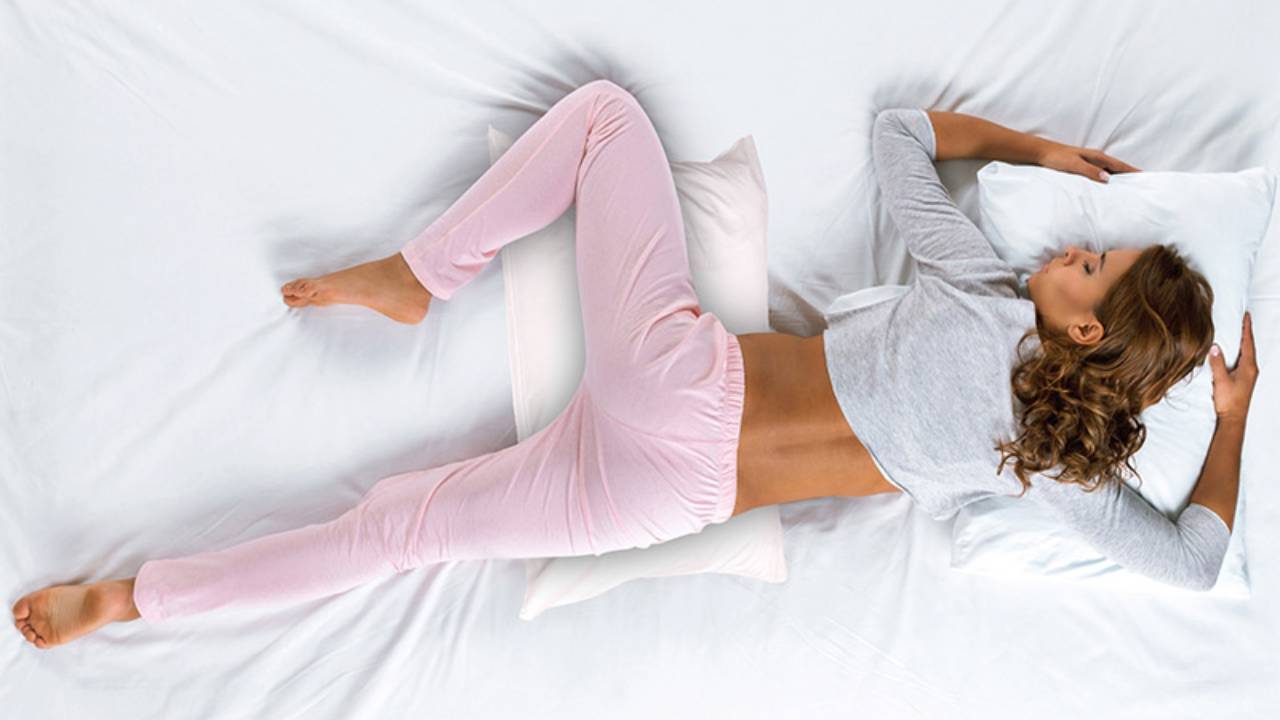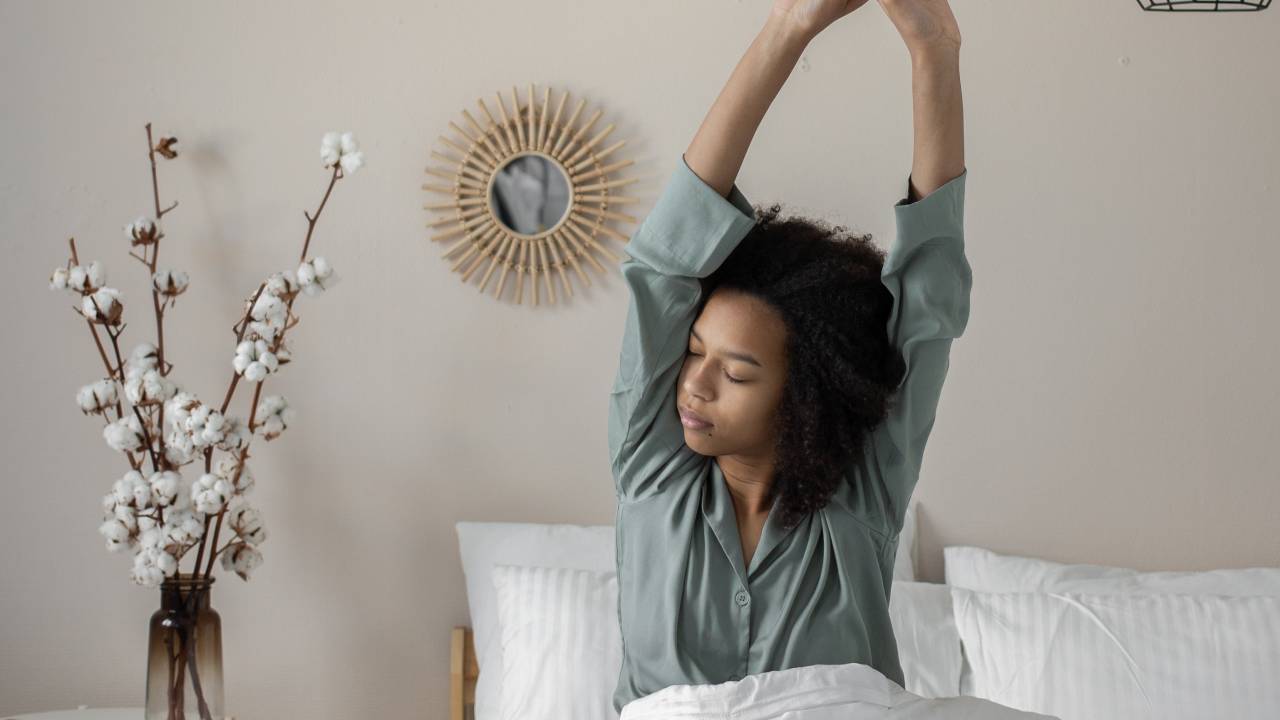5 tips for front sleepers: how to sleep on your stomach
The best way to sleep on your stomach, what mattress to buy & posture tips for front sleepers


Finding the perfect sleep position is vital for you to get the best night’s sleep and feel rested and ready to take on the day. However, there are pros and cons to everything, including what position you sleep in, and front sleepers bear the brunt of this criticism.
According to The Sleep Doctor, under 10% of people sleep on their front or stomachs. This rare sleep position comes with many benefits but compared to side and back sleepers, front sleeping (also known as prone or belly sleeping) has the most cons and can be very bad for you.
Sleeping on your front reduces snoring and sleep apnoea symptoms, and can also eliminate acid reflux and heartburn. On the flipside, front sleepers are more likely to experience neck and back problems, numbness and stiffness in the body and more facial wrinkles. Front sleepers might also experience more restlessness, plus pregnant women are told to completely avoid sleeping on their stomachs, especially during the early months.
While front sleeping can be incredibly comfortable for some people, many sleep experts have said it's one of the worst sleep postures out there. However, if this is the only position you can find sleep and comfort in, we’re not going to stop you. Instead, we’ve found 5 tips to sleeping on your front for a more restful night’s sleep.
P.S. For more sleep tips, check out our guides for how to sleep on your back and 5 tips for side sleepers.
1. Pick the right mattress

First things first, it’s important that you have the best mattress for your front sleeping habits. Look for something that’s firm and contouring, like the best memory foam mattress. The firmness of your mattress will prevent your body, particularly your hips and lower stomach, from sinking too far into the bed. This can affect your alignment and make your lower back strain to keep yourself level, which will result in pain and posture problems. If you’re not used to firm mattresses, check out the best mattress toppers to add extra comfort to your bed set-up.
The best mattress for stomach sleepers should also contour and cradle the pelvis to alleviate pressure and keep your spine in line. You should also be looking for a mattress that’s temperature regulating. When you sleep on your front, your stomach naturally traps heat so look for a mattress that wicks away sweat and moisture, and can keep you cool.
Get all the latest news, reviews, deals and buying guides on gorgeous tech, home and active products from the T3 experts
If you’re still unsure which mattress is best for front sleeping, we’ve got a couple of options for you to consider. First, the Nectar Memory Foam mattress is incredibly firm and supportive, and is ideal for both back and front sleepers. The top cover adapts to your body heat so you’re less likely to overheat with this mattress, and it’s pretty affordable, too. The Eve Original mattress is another great choice as it has zoned support areas and is good for both neck and back pain, something front sleepers can suffer from. It’s also breathable, moisture-wicking and cheaper than the Nectar option if you’re on a tight budget.
2. Choose a thin pillow (or no pillow at all!)

The main issue when it comes to sleeping on your stomach is increased risk of neck pain. When you sleep on your front, your neck is constantly twisted as you need to turn your head to the side to breathe. This not only moves your neck out of alignment with the rest of your body, but your neck will also hold all that pressure throughout the night which can cause pain, stiffness and bad posture.
To avoid this, use a thin flat pillow under your head. Using a thin pillow keeps your neck aligned and less angled, so you’re not craning your neck while you sleep. If your neck is still bothering you, you can get rid of the pillow altogether. The closer your head is to the mattress, the more your neck will be in line with your spine and you’ll experience less neck strain. If you want some pillow buying advice, check out our guide to the best pillow.
3. Place a pillow under your pelvis

Another pillow tip is to place a pillow underneath your pelvis. Front sleepers tend to push their pelvis down into the mattress which causes an uneven weight distribution and added pressure on the body, according to bellysleep.com. To avoid this, place a flat pillow under your pelvis and position it between your lower abdomen and top of your thighs. This lifts your spine, relieves pressures and keeps you from sinking into the mattress too much.
4. Keep your legs flat

Alongside making sure your spine aligned, keeping your legs flat and equal is also important for good front sleeping. Having your legs uneven can twist your spine and push you out of alignment. To keep your legs flat, avoid lifting one leg up or resting it on your pelvis pillow as this can damage your posture and strain your back. This tip is super simple as all you need to do is keep your legs straight and identical to each other.
5. Stretch before & after bed

Finally, have a good stretch before and after bed. Regardless of sleep position, we should all be aiming to do this anyway as this can banish tension and pain from the day and can iron out any kinks you might have developed over night. For front sleepers, the stretches to focus on before bed should target your back and neck. When you get into bed, make sure your body is in a neutral position and you’re in the best position possible by following the steps above.
When you get out of bed in the morning, check in with your body to see if you have any aches and pains before you stretch. Again, focus on the back and neck and work on bringing circulation to the body with some arm and leg stretches. If you’re unsure what stretches to try, have a look at 3 yoga poses to do before bed or the best stretching exercises to stretch the body from head to toe.

Beth is Home Editor for T3, looking after style, living and wellness. From the comfiest mattresses to strange things you can cook in an air fryer, Beth covers sleep, smart home, coffee machines, watches, grooming tools, fragrances, gardening and more.
In her spare time, Beth enjoys running, reading, baking and attempting craft projects that will probably end in disaster!